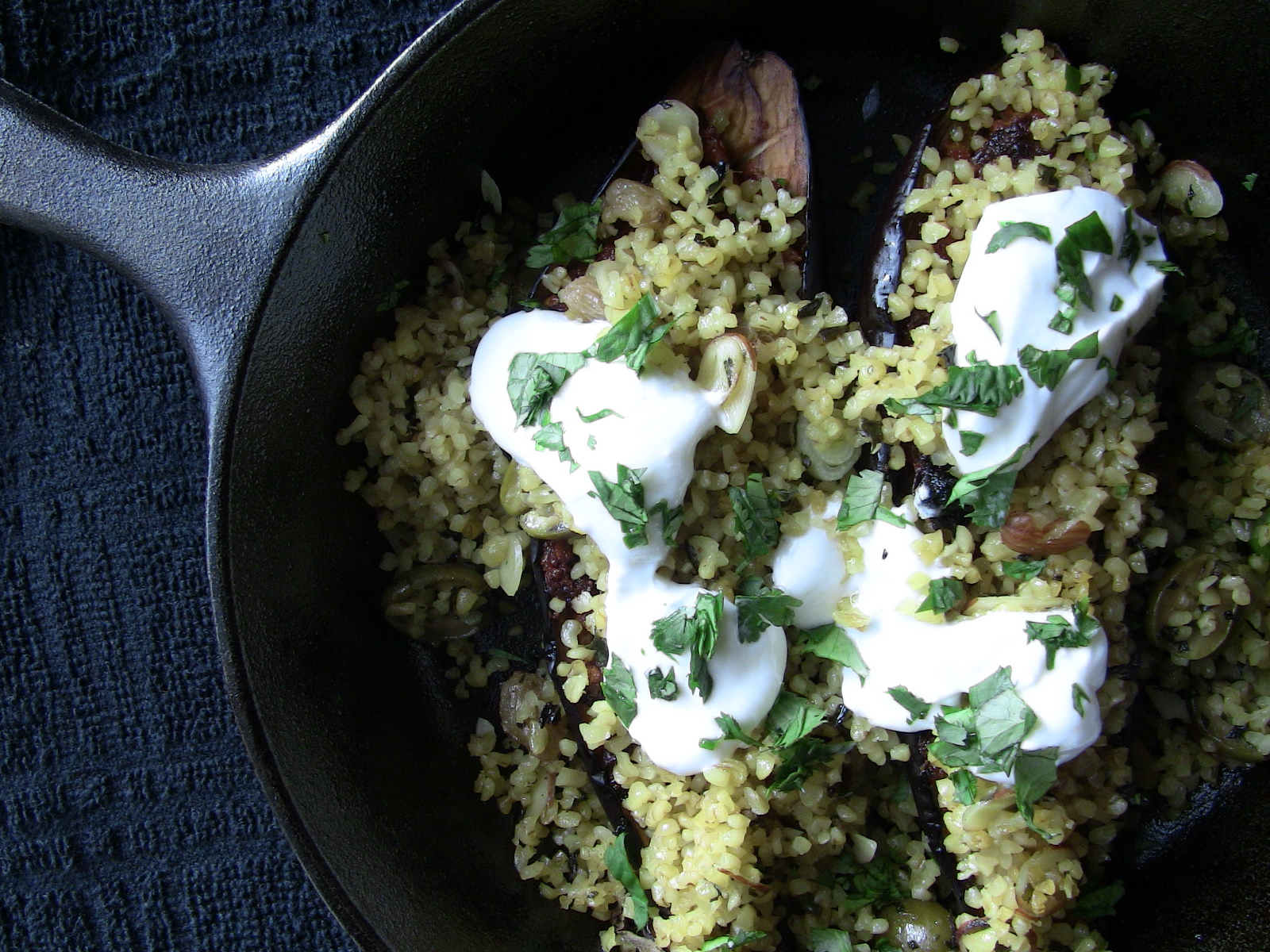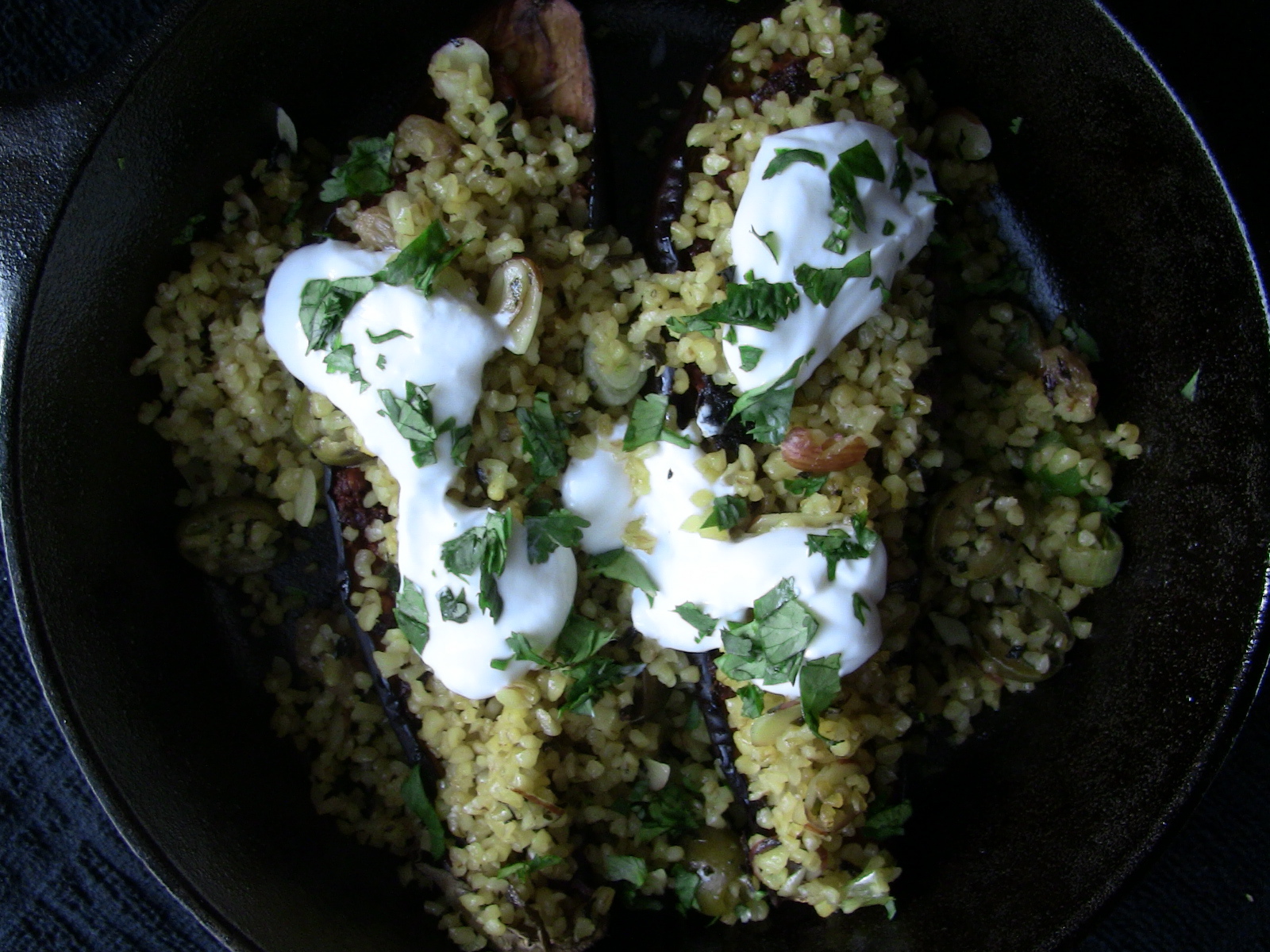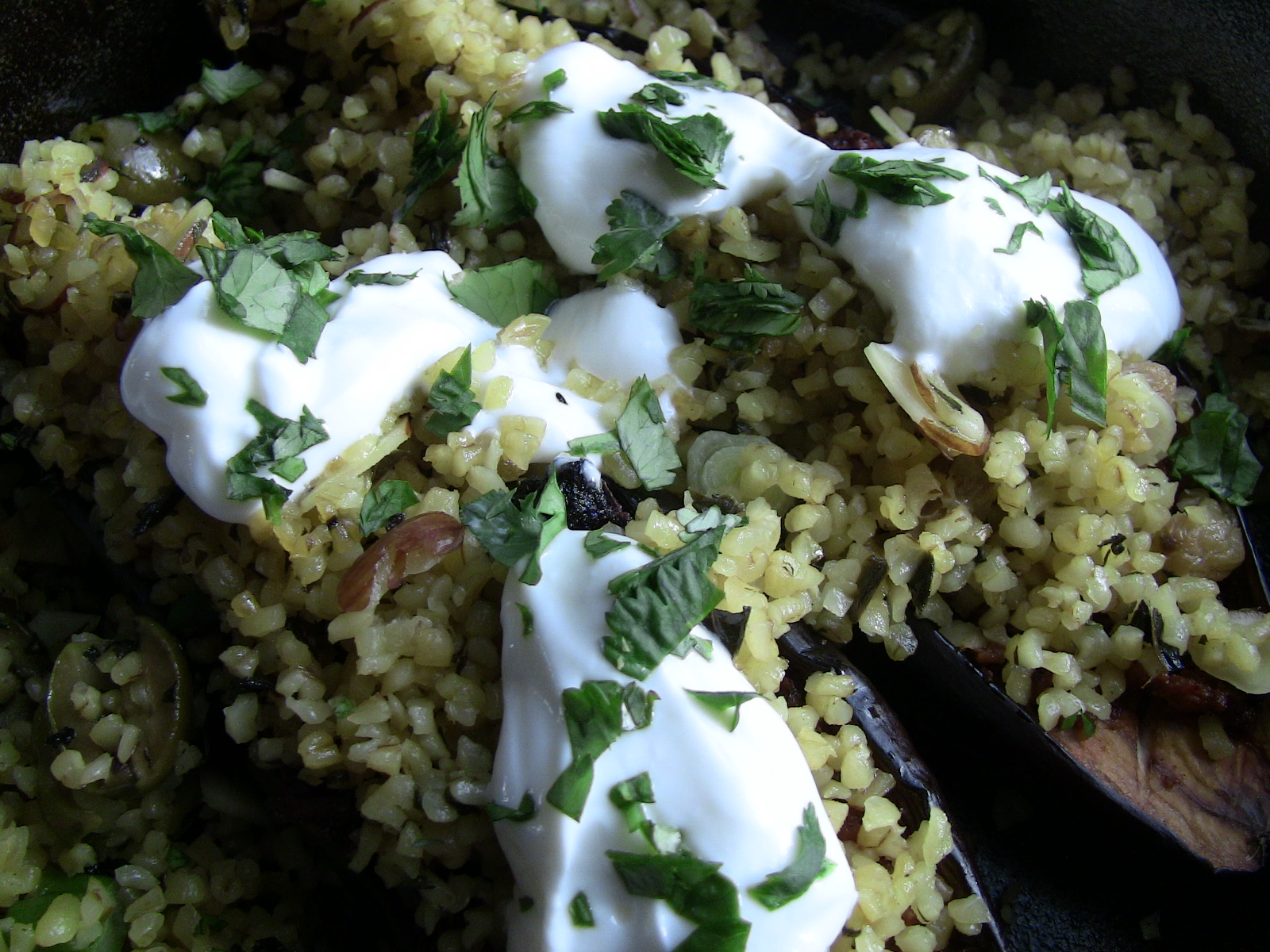- Chermoula Eggplant with Bulgur & Yogurt (adapted from Jerusalem: A Cookbook).
These past few weeks have been quite interesting for me as I discover little things about myself. Life can be so fascinating. The body and mind can work so mysteriously. Well, hey, it’s really no mystery if you dig really deep into the subject. What I really mean, I guess, is biology is biology. And the body will do the things those textbooks say it will if you’re not too careful with what you put in it. But what I find so interesting about how the body works is if you listen and respond to the signs your body gives you, chances are you will have a less frustrating time and feel a whole lot better. Anyway, enough with the mumbo jumbo, let me get down to what I’m really thinking: lately I’ve had this crazy aversion to animal protein. Yes, it’s true. My body and mind have been rejecting it as if it’s cat food. Surely, this is just a phase I’m going through (as evidenced by the porchetta panino I just scarfed down yesterday), but it’s a phase that is telling me “Kelly, you don’t have to eat it if you don’t want to. Kelly, you can be just as satisfied with vegetables.” I’ve even gone a bit far as to feel slightly grossed out by eggs and cheese. Can you imagine that? This is not to say I will never eat animal protein again. I am simply saying that if you ever experience this, it’s okay. Just listen to your body and respond to it. Maybe it’s just what you need for the time being. As a meat eater, I think it’s okay to lay off it from time to time, and just be sure that when you do eat meat, it is of sustainable quality. Yeah, yeah, yeah, one never knows the whole truth behind that matter. However, personally speaking, I feel more comfortable purchasing animal protein from a trusted source that prides itself on it’s practices rather than buying from the corner supermarket that sells the no-frills kind, even if it means I will spend more money.
In continuation, the foods that come to mind as a substitution for animal protein are eggplant, mushrooms, potatoes, kale, carrots, root vegetables, etc. Spices and grains also add to the satisfying factor of these non-meat options. There’s a whole new world out there that I am happy to have exposed myself to as I move forward on this culinary venture of mine. This eggplant dish has just the right touch of umami I seek whenever I’m making a non-meat dish. I borrowed the recipe from the cookbook called Jerusalem, by Yotam Ottolenghi and Sami Tamimi. Go ahead, have a look-see…
- Chermoula Eggplant with Bulgur & Yogurt (adapted from Jerusalem: A Cookbook).
- Chermoula Eggplant with Bulgur & Yogurt (adapted from Jerusalem: A Cookbook).
Chermoula Eggplant with Bulgur & Yogurt (recipe adapted from the cookbook Jerusalem by Yotam Ottolenghi and Sami Tamimi).
- 2 cloves garlic, crushed
- 2 teaspoons ground cumin
- 2 teaspoons ground coriander
- 1 teaspoon chile flakes
- 1 teaspoon sweet paprika
- 2 tablespoons finely chopped preserved lemon peel (store-bought)
- 2/3 cup olive oil, plus extra to finish
- 2 medium eggplants
- 1 cup fine bulgur
- 2/3 cup boiling water
- 1/3 cup golden raisins
- 3 1/2 tablespoons warm water
- 1/3 ounce cilantro, chopped, plus extra to finish
- 1/3 ounce mint, chopped
- 1/3 cup pitted green olives, halved
- 1/3 cup sliced almonds, toasted
- 3 green onions, chopped
- 1 1/2 tablespoons freshly squeezed lemon juice
- 1/2 cup Greek yogurt
- salt
Preheat the oven to 400 degrees Fahrenheit.
To make the chermoula, mix together in a small bowl the garlic, cumin, coriander, chile, paprika, preserved lemon, two-thirds of the olive oil, and 1/2 teaspoon salt.
Cut the eggplants in half lengthwise. Score the flesh of each half with deep, diagonal crisscross scores, making sure not to pierce the skin. Spoon the chermoula over each half, spreading it evenly, and place on a baking sheet cut side up. Put in the oven and roast for 40 minutes, or until the eggplants are completely soft.
Meanwhile, place the bulgur in a large bowl and cover with the boiling water.
Soak the raisins in warm water. After 10 minutes, drain the raisins and add them to the bulgur, along with the remaining oil. Add the herbs, olives, almonds, green onions, lemon juice, and a pink of salt and stir to combine. Taste and add more salt if necessary.
Serve the eggplants warm or at room temperature. Place 1/2 eggplant, cut side up, on each individual plate. Spoon the bulgur on top, allowing some to fall from both sides. Spoon over some yogurt, sprinkle with cilantro, and finish with a drizzle of oil.


